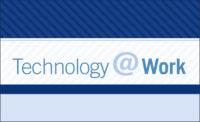In the transportation industry, layered security is critical to protecting a company’s reputation. Terminals, trucks and pallets of brand new goods are tempting not only to the passing thief, but to organized crime. There’s no margin for error: losing company assets to theft is bad, but losing a customer’s assets often means losing the customer — and more customers when word spreads.
That’s why Ryan Shewchuk, director of enterprise security at PITT OHIO, takes a proactive stance on security, as he did in securing their new Parma, Ohio terminal.
“We recognize that risks will always exist despite our best efforts to minimize them,” he said. “Understanding those risks and maintaining a proactive and preventative posture is important to us. Effectively weaving security strategies into our business plans, policies and culture are key to our security successes. Here at PITT OHIO, our company has a five-part mission statement, and commitment to security is one of them. Security is in lock step with everything else in terms of furthering our organizational goals.”
So where does he begin? “When we look at building a new terminal, we develop risk and threat assessments to inform our planning and design processes,” Shewchuk explained. “Homeland Security concerns are always prominent, and we do a lot of outreach and partnership work to stay up to speed. For example, after our most recent terminal opening near Pittsburgh, Pa., we hosted a tabletop exercise there with federal, state, and local first responders and Homeland Security partners. It was a great opportunity for all of us participants, and valuable lessons were learned without the consequences of a real event.
“We then engage in Crime Prevention Through Environmental Design (CPTED) strategies. We try to incorporate best practices into the design of the facility before it’s even built: the buildings, grounds, people and traffic flows — we’re not just adding security hardware; we work from the ground up.”
PITT OHIO also engages in sustainability and green strategies. Shewchuk explained, “We’ve been establishing targets for each new facility. Parma will be our second new Gold Star LEED certified facility, possibly our first platinum.”
While each facility varies a bit depending on need, PITT OHIO’s standard solution includes:
- electronically controlled, monitored gates;
- proximity card reader systems for access control to both work and parking;
- a variety of intrusion alarms in the buildings;
- networked surveillance cameras integrated with access control; and
- an integrated electric security fence around the entire perimeter of the property.
This electric security fence is most often provided by Electric Guard Dog (SDM’s 2016 Dealer of the Year). “We use Electric Guard Dog every place we can,” Shewchuck said.
Electric Guard Dog (EGD) is a leading supplier of electric security fences in the U.S. Its layered perimeter security system is centered on an electric fence that is installed inside an existing chain-link fence or other barrier and employs a “safe but memorable” pulsed shock upon contact. It is wired with monitored alarms to prevent scaling, spreading or cutting the wires. The system also fits well with PITT OHIO’s green and resiliency agendas, thanks to the solar panel that powers the system. This ensures that security is on, even when the main power is out.
“We’re an asset based company: you can drive by a terminal and see trailers, tractors, all kinds of things, so we really appreciate the proactive deterrence value of the EGD fence,” Shewchuk said. “It’s a cold machine, unaffected by fatigue, and it’s out there while our people are working inside. We have an effective security blanket basically, on the edge of our property.”
Shewchuk added, “It’s elegant in its simplicity. It’s pretty resilient in terms of materials, and not particularly complex. That’s a benefit. Some other forms of security technology have a lot more that can go wrong: bad weather, utility outages, and you may be out of luck. Electric Guard Dog can still perform on its own.
“Additionally, the system is really agile. When we go into a new location, we might lease an existing building for several years while we develop the market. Then we may build somewhere else, and the contract on our electric security fence, and all the security we’ve integrated into the fence, moves with us. They can be where we need, when we need them to be there.”
But what matters most are results. How does Shewchuk measure the success of his proactive security platform?
“We aim for solid standards and effective investments in security technologies,” he explained. “Our great employees, leadership, and security partners continuously make it happen. Are our customers and homeland security agencies satisfied with our security performance? Are we meeting our security commitments to ourselves? Those are the questions we constantly reflect on, and when we can objectively say ‘Yes,’ we’re in a good place.”




